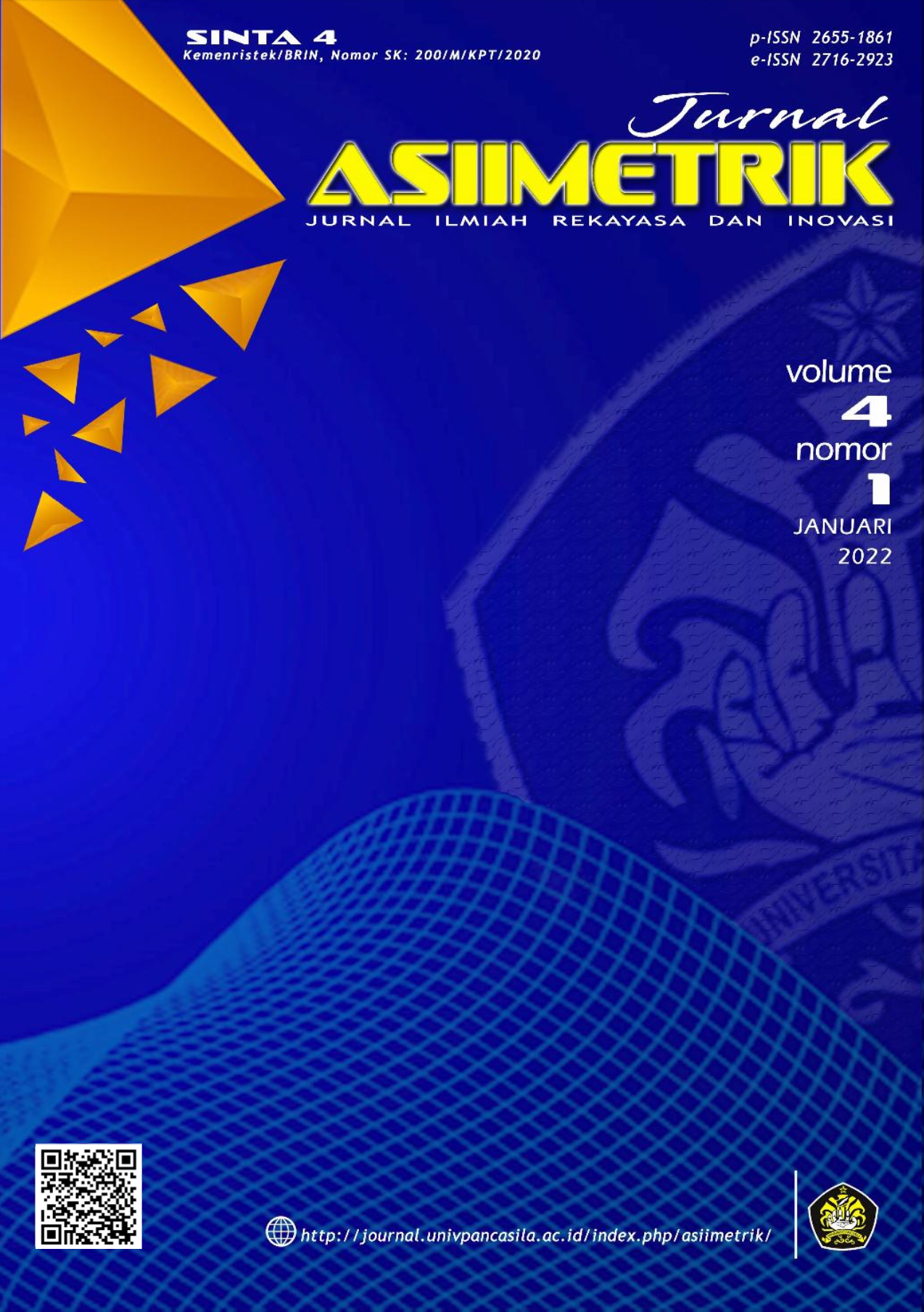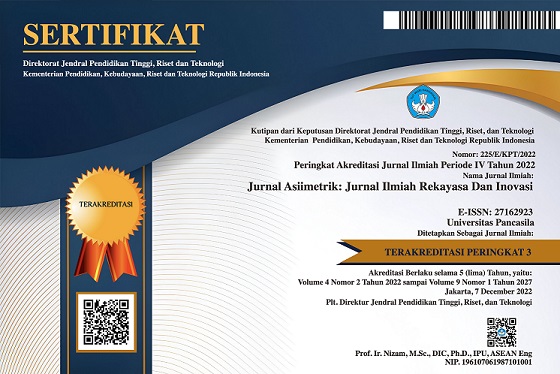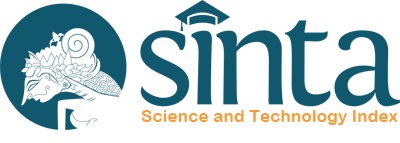Rancang Bangun Alat Pengering Cabai Skala Laboratorium Dengan Pemanfaatan Concentrated Solar Power
DOI:
https://doi.org/10.35814/asiimetrik.v4i1.3028Keywords:
chili dryer, concentrated solar power, energy utilizationAbstract
Increasing plantation productivity in Indonesia is currently increasing from year to year, one of the most needed plantation products in the community is red chili, post-harvest handling that is not paid attention to causes chilies to rot quickly. One of the post-harvest handlings of excessive chili so as not to decay is by drying. The tool design and manufacturing method used is the Pahl & Beitz design method and the manufacturing process used includes cutting, bending, perforating, joining and finishing stages. The results of the dryer design carried out are by developing a rack type dryer design or tray dryer, using three shelves as a place or container to dry chili using a radiator system and a fan as a heating device for the drying room. The results showed that the laboratory scale red chili dryer manufacturing process took 374 minutes with a total cost of Rp.4.715.400. As for the red chili drying process carried out for 360 minutes at a temperature of 60C with a weight of 500 grams per shelf, the average moisture content was 40% and the drying rate was 0.55 gram/minute.
Downloads
References
Kementan, Pusdatin, 2016. Outlook Komoditas Pertanian Sub Sektor Hortikultura Cabai Merah. Pusat Data Dan Informasi Kementerian Pertanian RI.
Murti, K. H., 2017. Pengaruh Suhu Pengeringan Terhadap Kandungan Vitamin C Buah Cabai Keriting Lado F1 (Capsicum Anunum L). Jurnal Keteknikan Pertanian Tropis Dan Biosistem, 5(3), hal. 245-256.
Erlina, D. M. dan Tazi, I., 2009. Uji Model Alat Pengering Tipe Rak Dengan Kolektor Surya (Studi Kasus Untuk Pengeringan Cabai Merah (Capsicum Annum Var. L). Jurnal Neutrino, 2(1). hal. 1-14.
Rahmalina, D., Lesmana, I.G.E., Suwandi, A., Rahman, R.A., Ramadhan, F.S. dan Sugiyanto, K.A., 2021. Pengembangan Stirling Engine Tipe Piston Bebas Untuk Aplikasi Concentrated Solar Power (CSP). Jurnal Teknologi, 13(1), hal. 101-108.
Boothroy, G., Dewhurst, P. dan Knight, W., 2002. Product Design for Manufacture and Assembly, Second Edition, New York: Marcel Dekker. [Cetak].
Pahl, G. dan Beitz, W., 2005. Engineering Design - A Systematic Approach - 2nd edition. Darmstadt, German: Springer-Verlag London. [Cetak].
Jufrizal, J., Napitupulu, F.H. dan Ambarita, H., 2015. Studi Eksperimental Performansi Solar Water Heater Jenis Kolektor Plat Datar dengan Penambahan Thermal Energy Storage. Cylinder: Jurnal Ilmiah Teknik Mesin, 1(2), hal. 27-36.
Nugroho A. A., 2017. Pembangkit Listrik Tenaga Surya Menggunakan Stirlling Engine. Seminar Nasional Peranan Ipteks Menuju Industri Masa Depan (PIMIMD-4). Institut Teknologi Padang (ITP). hal. 5-8.
Razy, A. M., 2010. Perancangan Dan Pembuatan Mesin Pengering (DRIYER) Produk Perkebunan Dan Pertanian. Jurnal POLIMESIN, 8(1). hal. 745-752.
Bachruddin, Z. dan Rachman, C., 2009. Standar Prosedur Operasional (SPO) Pengolahan Cabe, Jakarta: Direktorat Pengolahan Hasil Pertanian Direktorat Jenderal Pengolahan Dan Pemasaran Hasil Pertanian Departemen Pertanian.
Groover, M. P., 2013. Fundamentals of Modern Manufacturing: Materials, Processes, and Systems. United Stated: John Willey & Wilson Inc. [Cetak].
Mujumdar, A. S., 2006. Handbook of Industrial Drying, New York: Taylor & Francis group. [Cetak].
Dieter, G. E. dan Schmidt, L. C., 2013. Engineering Design, New York: McGraw-Hill. [Cetak].
Mulyanto, T., dan Supriyono, 2019. Proses Manufaktur Mesin Rotari Tipe Hibrida Untuk Pengering Cabai. Jurnal Asiimetrik: Jurnal Ilmiah Rekayasa & Inovasi, 1(2). hal. 125-132.





























